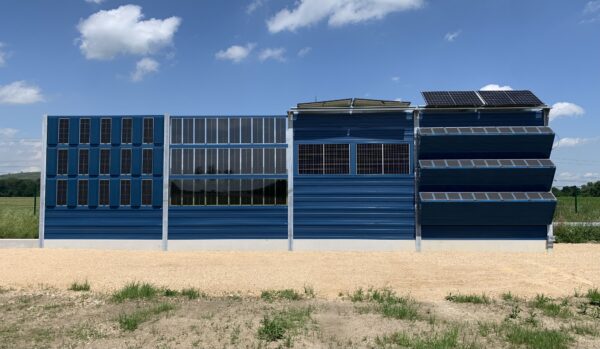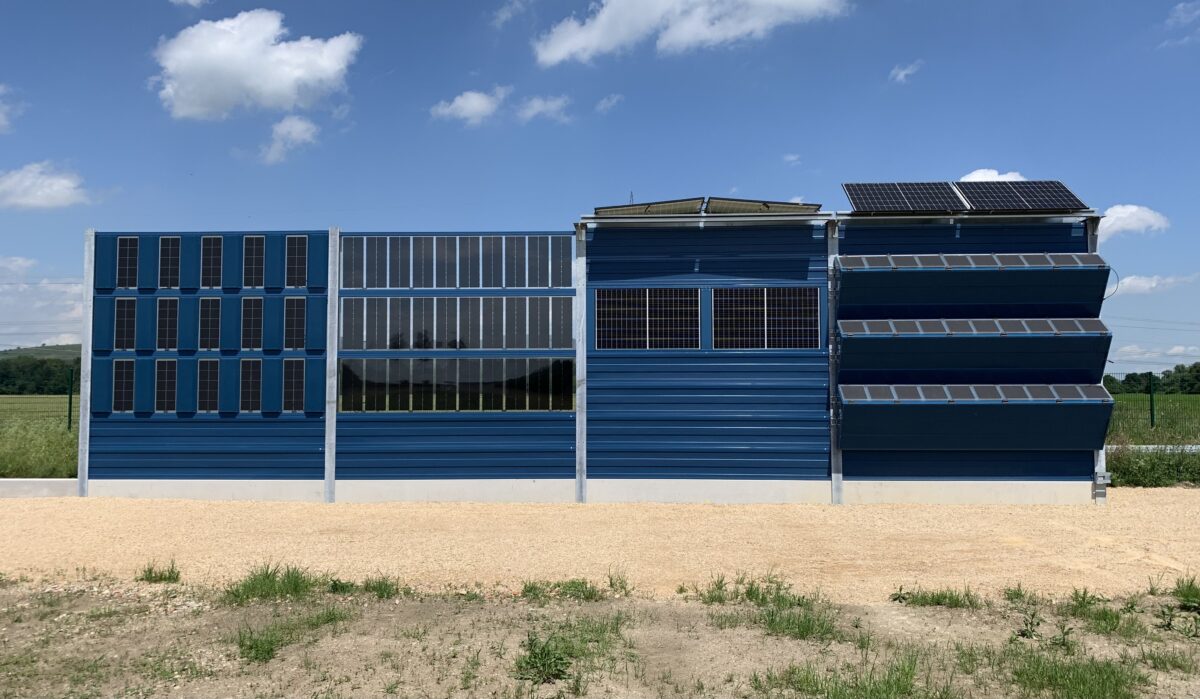Researchers at Germany's Fraunhofer Institute for Solar Energy Systems ISE (Fraunhofer ISE) are field-testing new module concepts to integrate into noise barrier walls alongside roadways or railways. The hope is that some of the designs will emerge as cost-effective, power-generating solutions for application in newly constructed soundwalls, in retrofits, or add-on projects.
The study, dubbed PVwins, began in 2020 and has now reached the outdoor field testing stage. The research team developed five different integrated PV solutions for use in sound-absorbing walls, typically located in populated areas with busy roads and railway lines. They investigated the design, prototyping, manufacturing, economic potential and marketability.
The partners collaborating include R. Kohlhauer GmbH, which specializes in providing sound protection walls and noise barriers, IGRA Power GmbH, an engineering and PV specialist, German utility Energiegenossenschaft Inn‐Salzach, the German Ministry of Roadways Bundesanstalt für Strassenwesen, and the national railway research organization Deutsches Zentrum für Schienenverkehrsforschung des Eisenbahn Bundesamt, along with Swiss PV module manufacturer Megasol Energie.
Some of the solutions to emerge from the collaboration enable soundwalls made only with PV panels without the need for additional sound-absorbing elements, while others are suitable for retrofitting existing infrastructure, or to use as an add-on. A summary of each PV solution is listed below with references to the above photo (from left to right).

- A combination solution where modules have two independent cell strings to harvest light on the rear of the noise absorber and front side of the same wall (far left)
- Transparent micro-perforated acoustic absorbers on the front side of the module
- Conventional PV modules installed vertically on a barrier facing away from the road
- Conventional PV panels installed via brackets atop the noise barriers, one is oriented east/west and the other is south-facing
- Novel cassettes for retrofitting with acoustic absorbers facing the road and inclined PV panels (far right)
Project leader, Jacob Forster, explained that the noise-reducing modules are larger and more robust than conventional panels, measuring 3.96 m, with 6 mm glass panels, and a stable frame supplied by Kohlhauer. The other modules mounted atop the walls and vertically are standard glass-backsheet modules with aluminum frames. “Here the motivation was not using special modules, but cheap components,” Forster told pv magazine, adding that a range of technologies can be used, such as passivated emitter rear cell (PERC), heterojunction, or Tunnel Oxide Passivated Contact (TOPCon).
Popular content
A paper detailing the module and system designs, “Photovoltaic Noise Barriers as Energy Generating Infrastructure: Functional Overview about Five Solutions (pdf),” was presented at the 40th European Photovoltaic Solar Energy Conference and Exhibition.
The potential for this type of vertical PV application is significant, according to the latest research by the European Commission's Joint Research Centre (JRC). Fraunhofer ISE is also participating in another integrated PV study, known as MASS-IPV.
This content is protected by copyright and may not be reused. If you want to cooperate with us and would like to reuse some of our content, please contact: editors@pv-magazine.com.



By submitting this form you agree to pv magazine using your data for the purposes of publishing your comment.
Your personal data will only be disclosed or otherwise transmitted to third parties for the purposes of spam filtering or if this is necessary for technical maintenance of the website. Any other transfer to third parties will not take place unless this is justified on the basis of applicable data protection regulations or if pv magazine is legally obliged to do so.
You may revoke this consent at any time with effect for the future, in which case your personal data will be deleted immediately. Otherwise, your data will be deleted if pv magazine has processed your request or the purpose of data storage is fulfilled.
Further information on data privacy can be found in our Data Protection Policy.